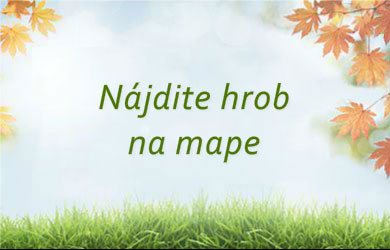- Vývoj pochovávania v Európe
- Vývoj pochovávania na Slovensku
- Slovenské ľudové náhrobníky
- Súčasný stav pochovávania na Slovensku
- Súčasná tvorba pohrebísk v Európe
- Súčasné trendy v úpravách hrobov
- Výsadba hrobov
- Fotogaléria
Vývoj pochovávania v Európe
K najstarším svedectvám, ktoré nás informujú o ľudskej civilizácii, patria práve pohrebiská. V mladšej dobe kamennej vznikala prvá ranná sepulkrálna architektúra vo forme megalitických hrobov. Snáď najznámejšími sepulkrálnymi stavbami v histórii sú kráľovské hrobky v Egypte - pyramídy a skalné hroby v Údolí kráľov. Rimania vynašli pre pochovávanie sociálny systém. Pohrebné spolky sa starali o pochovávanie chudobných do tzv. kolumbárií, kde sa do výklenkov umiestňovali po dve urny s popolom. Rímske katakomby boli podzemné pohrebiská pre kostrové pochovávanie a súviseli s prechodom od spaľovania mŕtvych ku kostrovému pochovávaniu v 2.storočí n. l.. Pod vplyvom kresťanstva začína v celej Európe prevládať kostrové pochovávanie nad spaľovaním, čo je spojené s vierou v zmŕtvychvstanie zomrelých. Od povolenia kresťanstva sa pochovávanie uskutočňuje priamo v chrámoch a kláštoroch, alebo vo vysvätenej pôde v ich bezprostrednom okolí.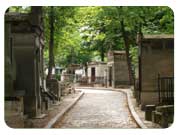 Významné zmeny v pochovávaní nastali až v období osvietenstva, kedy z hygienických dôvodov boli zrušené cintoríny v okolí kostolov. Parížsky parlament v r. 1765 prikázal premiestnenie všetkých cintorínov z Paríža. Na novovybudovaných cintorínoch v Paríži bol zavedený viactriedny systém umiestňovania hrobov, členenie plochy pohrebiska bolo pravidelné, monumentálne hroby boli umiestňované popri cestách s alejami, ostatné jednoduchšie hroby tvorili hrobové polia. Zvláštnosťou boli krematóriá pre pohreby spálením, ktoré sa v priebehu 19. storočia chápali ako vedomé proticirkevné hnutie. Cintoríny tohto obdobia sa neskôr stali základom obrazu neskorších európskych cintorínov. Známy z tohto obdobia je parížsky cintorín Pére Lachaise otvorený v r.1807.
Významné zmeny v pochovávaní nastali až v období osvietenstva, kedy z hygienických dôvodov boli zrušené cintoríny v okolí kostolov. Parížsky parlament v r. 1765 prikázal premiestnenie všetkých cintorínov z Paríža. Na novovybudovaných cintorínoch v Paríži bol zavedený viactriedny systém umiestňovania hrobov, členenie plochy pohrebiska bolo pravidelné, monumentálne hroby boli umiestňované popri cestách s alejami, ostatné jednoduchšie hroby tvorili hrobové polia. Zvláštnosťou boli krematóriá pre pohreby spálením, ktoré sa v priebehu 19. storočia chápali ako vedomé proticirkevné hnutie. Cintoríny tohto obdobia sa neskôr stali základom obrazu neskorších európskych cintorínov. Známy z tohto obdobia je parížsky cintorín Pére Lachaise otvorený v r.1807.
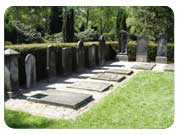 V polovici 19. storočia pod vplyvom romantizmu vznikla záľuba skôr v krajinárskom stvárnení plôch cintorínov. V Európe vznikol prvý parkovo upravený cintorín Ohlsdorf v nemeckom Hamburgu. V rokoch 1897 - 1913 bol areál o rozlohe 400 ha upravovaný J. W. Cordesom (1840- 1917) ako prírodný park, do ktorého boli zakomponované hrobové polia.
V polovici 19. storočia pod vplyvom romantizmu vznikla záľuba skôr v krajinárskom stvárnení plôch cintorínov. V Európe vznikol prvý parkovo upravený cintorín Ohlsdorf v nemeckom Hamburgu. V rokoch 1897 - 1913 bol areál o rozlohe 400 ha upravovaný J. W. Cordesom (1840- 1917) ako prírodný park, do ktorého boli zakomponované hrobové polia. Okolo roku 1900 vzniklo v Nemecku reformné hnutie, ktoré vyzývalo k jednoduchosti pri tvorbe náhrobkov, ktoré majú vyjadrovať dôstojnú smrť. V tomto duchu bol založený lesný cintorín v Mníchove v r. 1907, kde bol les chápaný ako prírodná kaplnka, predpísaná bola jednoduchosť náhrobkov. Priaznivé podmienky pre vznik a rozvoj lesných cintorínov boli v 19. storočí najmä vo Švédsku. Severská lesnatá krajina, spätosť obyvateľstva s prírodou a vplyv romantizmu - to všetko prispelo k vzniku lesných cintorínov. Najznámejší z nich je lesný cintorín v Enskede pri Štokholme zrealizovaný v r. 1915 - 1940.
Vývoj pochovávania na Slovensku
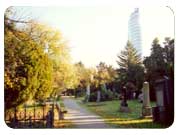 V 8. storočí bolo už juhozápadné Slovensko osídlené prevažne ľudom, ktorý svojich mŕtvych nespaľoval, ale pochovával kostrovo, čo bolo v celej Európe prejavom postupnej christianizácie. Slovania označovali hroby balvanmi, predovšetkým pri hlave a nohách, ktoré sa nazývali žiaľniky. Pochovaní boli väčšinou orientovaní nohami na východ, čo súviselo s kultom Slnka. S rozširovaním kresťanstva sa obmedzovali aj pohanské zvyky a pochovávalo sa okolo kostolov podľa cirkevných predpisov. Už v 16. storočí bola po prvý raz nastolená požiadavka, aby sa cintoríny zriaďovali mimo obcí a miest. Definitívne premiestnenie cintorínov na Slovensku súviselo až so zákonom z roku 1876, ktorý nepripúšťal zriaďovanie nových cintorínov okolo novovybudovaných kostolov uprostred mesta či obce. Vývoj väčších mestských cintorínov na Slovensku je podrobne známy najmä z histórie mesta Bratislava, ktoré svojou veľkosťou a multikultúrnosťou dalo priestor na vznik väčšieho počtu pohrebísk a to zvlášť napr. katolíckych, evanjelických a židovských. Aj tu vznikla v 18. storočí požiadavka premiestnenia pochovávania mimo mesta, preto v r. 1742 vydal magistrát zákaz ďalšieho používania vnútromestských cintorínov. Veľkým pokrokom bolo zriadenie cintorína sv. Ondreja v roku 1784, ktorý sa stal miestom posledného odpočinku popredných predstaviteľov vedy, kultúry a spoločenského diania od konca 18. až do polovice 20. storočia. V súčasnosti slúži Ondrejský cintorín ako areál vyhradenej zelene so zachovaným pôvodným pietnym charakterom, ale i rekreačnou funkciou. Prvé krematórium na území bývalého Rakúska - Uhorska bolo postavené už v roku 1916 v Liberci a prevádzku začalo v roku 1918. Veľmi skoro po vzniku Československa vzniklo na území Čiech a Moravy 14 krematórií. Na Slovensku nastal rozvoj kremácie až po 2. sv. vojne, ako prvé bolo vybudované krematórium v Bratislave - Lamači v r. 1968.
V 8. storočí bolo už juhozápadné Slovensko osídlené prevažne ľudom, ktorý svojich mŕtvych nespaľoval, ale pochovával kostrovo, čo bolo v celej Európe prejavom postupnej christianizácie. Slovania označovali hroby balvanmi, predovšetkým pri hlave a nohách, ktoré sa nazývali žiaľniky. Pochovaní boli väčšinou orientovaní nohami na východ, čo súviselo s kultom Slnka. S rozširovaním kresťanstva sa obmedzovali aj pohanské zvyky a pochovávalo sa okolo kostolov podľa cirkevných predpisov. Už v 16. storočí bola po prvý raz nastolená požiadavka, aby sa cintoríny zriaďovali mimo obcí a miest. Definitívne premiestnenie cintorínov na Slovensku súviselo až so zákonom z roku 1876, ktorý nepripúšťal zriaďovanie nových cintorínov okolo novovybudovaných kostolov uprostred mesta či obce. Vývoj väčších mestských cintorínov na Slovensku je podrobne známy najmä z histórie mesta Bratislava, ktoré svojou veľkosťou a multikultúrnosťou dalo priestor na vznik väčšieho počtu pohrebísk a to zvlášť napr. katolíckych, evanjelických a židovských. Aj tu vznikla v 18. storočí požiadavka premiestnenia pochovávania mimo mesta, preto v r. 1742 vydal magistrát zákaz ďalšieho používania vnútromestských cintorínov. Veľkým pokrokom bolo zriadenie cintorína sv. Ondreja v roku 1784, ktorý sa stal miestom posledného odpočinku popredných predstaviteľov vedy, kultúry a spoločenského diania od konca 18. až do polovice 20. storočia. V súčasnosti slúži Ondrejský cintorín ako areál vyhradenej zelene so zachovaným pôvodným pietnym charakterom, ale i rekreačnou funkciou. Prvé krematórium na území bývalého Rakúska - Uhorska bolo postavené už v roku 1916 v Liberci a prevádzku začalo v roku 1918. Veľmi skoro po vzniku Československa vzniklo na území Čiech a Moravy 14 krematórií. Na Slovensku nastal rozvoj kremácie až po 2. sv. vojne, ako prvé bolo vybudované krematórium v Bratislave - Lamači v r. 1968.
Slovenské ľudové náhrobníky
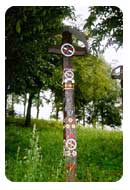 Slovenské ľudové náhrobníky je možné triediť podľa materiálu a formy. Podľa materiálu sa delia náhrobníky na drevené, kamenné, železné a ojedinelo i keramické. Výber materiálu záležal najmä od jeho prirodzených zdrojov v okolitej krajine. Možnosti jeho opracovania často ovplyvnili aj formu náhrobníkov. Formy náhrobníkov boli počas svojho vývoja silne ovplyvnené aj náboženstvom. Kríže sa vyskytujú u príslušníkov rímskokatolíckeho vyznania a u gréckokatolíkov, stĺpy u evanjelikov a kamenné náhrobníky u židov. Kombináciou rôznych materiálov a foriem náhrobkov vznikla pestrá škála ľudových náhrobníkov, ktoré si navyše nesú typické znaky podľa jednotlivých krajov, či dokonca dedín, čo bolo odrazom spoločných tradícií, náboženstva a rovnakého sociálneho postavenia.
Slovenské ľudové náhrobníky je možné triediť podľa materiálu a formy. Podľa materiálu sa delia náhrobníky na drevené, kamenné, železné a ojedinelo i keramické. Výber materiálu záležal najmä od jeho prirodzených zdrojov v okolitej krajine. Možnosti jeho opracovania často ovplyvnili aj formu náhrobníkov. Formy náhrobníkov boli počas svojho vývoja silne ovplyvnené aj náboženstvom. Kríže sa vyskytujú u príslušníkov rímskokatolíckeho vyznania a u gréckokatolíkov, stĺpy u evanjelikov a kamenné náhrobníky u židov. Kombináciou rôznych materiálov a foriem náhrobkov vznikla pestrá škála ľudových náhrobníkov, ktoré si navyše nesú typické znaky podľa jednotlivých krajov, či dokonca dedín, čo bolo odrazom spoločných tradícií, náboženstva a rovnakého sociálneho postavenia.
Súčasný stav pochovávania na Slovensku
V posledných desaťročiach sa vzhľad pohrebísk na Slovensku, či už v mestách, ale najmä na vidieku, podstatne zmenil. Pôvodné storočia používané formy a materiály náhrobkov pohltil kameň, betón a sériová výroba, pôvodné pohrebné zvyklosti upadli do zabudnutia. Cintoríny stratili svoju dôstojnú atmosféru, z náhrobníkov sa vytratil cit, láska, pokora. Podiel zelene na pohrebiskách sa znižuje na úkor intenzity využitia miesta pre pochovávanie. Súčasné riešenia cintorínov už dávno nevyhovujú súčasným požiadavkám na úpravu pohrebísk, čo sa odráža aj v ich problematickej a nedostatočnej údržbe. Dnešný stav je výsledkom dlhotrvajúcej krízy cintorínskej kultúry. Snáď za najkrajší príklad tvorby pohrebísk 20. storočia je možné považovať urnový háj v Bratislave - Lamači. Súčasne so stavbou objektu krematória (1968) sa budoval aj urnový háj v pôvodnom dubovo-borovicovom lesnom poraste na svahovitom teréne. Budova krematória navrhnutá Ing. arch. Ferdinandom Milučkým, predstaviteľom slovenskej neskorej moderny, patrí medzi najkrajšie stavby Slovenskej architektúry.
Snáď za najkrajší príklad tvorby pohrebísk 20. storočia je možné považovať urnový háj v Bratislave - Lamači. Súčasne so stavbou objektu krematória (1968) sa budoval aj urnový háj v pôvodnom dubovo-borovicovom lesnom poraste na svahovitom teréne. Budova krematória navrhnutá Ing. arch. Ferdinandom Milučkým, predstaviteľom slovenskej neskorej moderny, patrí medzi najkrajšie stavby Slovenskej architektúry. 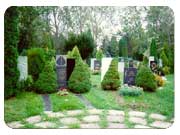 Zatiaľ za jediný na Slovensku zrealizovaný pokus o parkový cintorín môžeme považovať cintorín v Bratislave - Ružinove z r. 1971 - 1980. Koncepcia pohrebiska je tvorená systémom okružných hlavných ciest obklopených vysokou zeleňou, ktorá vymedzuje hrobové polia kruhového pôdorysu. Hroby sú trávnaté s obrubami v úrovni terénu, s trvalou výsadbou a sezónnou výsadbou rastlín pri hlave hrobu. Významným pozitívnym prvkom boli návrhy náhrobných kameňov, z ktorých bol možný výber podľa individuálneho vkusu a zároveň bol dodržaný jednotný výraz hrobového poľa. Súčasný stav cintorína je negatívne poznačený zahusťovaním hrobových polí z dôvodu väčšej intenzity využitia plochy.
Zatiaľ za jediný na Slovensku zrealizovaný pokus o parkový cintorín môžeme považovať cintorín v Bratislave - Ružinove z r. 1971 - 1980. Koncepcia pohrebiska je tvorená systémom okružných hlavných ciest obklopených vysokou zeleňou, ktorá vymedzuje hrobové polia kruhového pôdorysu. Hroby sú trávnaté s obrubami v úrovni terénu, s trvalou výsadbou a sezónnou výsadbou rastlín pri hlave hrobu. Významným pozitívnym prvkom boli návrhy náhrobných kameňov, z ktorých bol možný výber podľa individuálneho vkusu a zároveň bol dodržaný jednotný výraz hrobového poľa. Súčasný stav cintorína je negatívne poznačený zahusťovaním hrobových polí z dôvodu väčšej intenzity využitia plochy.
Súčasná tvorba pohrebísk v Európe
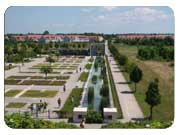 Súčasná moderná tvorba pohrebísk v Európe rešpektuje naďalej historický vývoj v jednotlivých krajinách a vychádza z prírodných podmienok. Vznikajú cintoríny vychádzajúce z architektonických, či parkových pohrebísk, ale taktiež krajinné cintoríny, inšpirujúce sa lesnými cintorínmi. Medzi najnovšie príklady tvorby pohrebísk patrí krajinný cintorín v Novom Meste v Slovinsku z r. 2000, ktorý vznikol na 40 ha ploche v mierne zvlnenom teréne krasového územia s obnaženými skalami a pôvodným smrekovým lesom. V roku 2000 boli dané do užívania taktiež dva nové cintoríny v Mníchove, ktoré vznikli na plochách bývalých vojenských letísk, a to
cintorín Neubiberger a cintorín Riem, ktoré sa vyznačujú architektonickým riešením.
Súčasná moderná tvorba pohrebísk v Európe rešpektuje naďalej historický vývoj v jednotlivých krajinách a vychádza z prírodných podmienok. Vznikajú cintoríny vychádzajúce z architektonických, či parkových pohrebísk, ale taktiež krajinné cintoríny, inšpirujúce sa lesnými cintorínmi. Medzi najnovšie príklady tvorby pohrebísk patrí krajinný cintorín v Novom Meste v Slovinsku z r. 2000, ktorý vznikol na 40 ha ploche v mierne zvlnenom teréne krasového územia s obnaženými skalami a pôvodným smrekovým lesom. V roku 2000 boli dané do užívania taktiež dva nové cintoríny v Mníchove, ktoré vznikli na plochách bývalých vojenských letísk, a to
cintorín Neubiberger a cintorín Riem, ktoré sa vyznačujú architektonickým riešením. 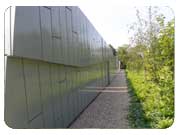 V roku 2001 sa začal proces renovácie historického pohrebiska Nieuwe-Ooster v Amsterdame, ktorého súčasťou bola obnova dvoch sekcií určených dnes pre urnové pochovávanie. Dominantou novovznikutého priestoru je kolumbárium s výraznou zinkovou fasádou a vodný kanál, ktorý taktiež umožňuje pochovávanie.
V roku 2001 sa začal proces renovácie historického pohrebiska Nieuwe-Ooster v Amsterdame, ktorého súčasťou bola obnova dvoch sekcií určených dnes pre urnové pochovávanie. Dominantou novovznikutého priestoru je kolumbárium s výraznou zinkovou fasádou a vodný kanál, ktorý taktiež umožňuje pochovávanie.
Súčasné trendy v úpravách hrobov
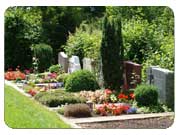 Úprava hrobu je v rámci Európy pomerne rozdielna a súvisí s kultúrou a históriou, spôsobom pochovávania, ako aj s prírodnými podmienkami. V severských krajinách prevažujú trávnaté povrchy hrobov, južné krajiny sú známe prevahou monumentálnych zakrytých hrobov. Najväčšia pozornosť úprave hrobu výsadbou rastlín sa venovala v Nemecku v období klasicizmu a romantizmu. Išlo o bohatú kvetinovú výzdobu hrobov, najmä letničkami. Táto tradícia ovplyvnila aj úpravy hrobov v Európe. Základným trendom, či už sa to týka celkového riešenia pohrebiska, alebo detailu hrobov je v súčasnosti jednotnosť a jednoduchosť. Veľká možnosť individuálnej úpravy hrobov má za následok veľkú tvarovú a farebnú bohatosť, čo viedlo k potrebe zjednotiť úpravy hrobov aspoň v rámci jednotlivých hrobových polí, ktoré sú opticky oddelené od okolia. Môže ísť o definovanie tvaru, veľkosti a farby pomníka, určenie druhu hrobu a jeho veľkosti, povrchu hrobu, jeho obrúb atď. Nutné je však vždy zachovať možnosti individuálneho výberu vzhľadu miesta a možnosť individuálneho odkazu náhrobku, aby sme sa vyhli uniformite.
Úprava hrobu je v rámci Európy pomerne rozdielna a súvisí s kultúrou a históriou, spôsobom pochovávania, ako aj s prírodnými podmienkami. V severských krajinách prevažujú trávnaté povrchy hrobov, južné krajiny sú známe prevahou monumentálnych zakrytých hrobov. Najväčšia pozornosť úprave hrobu výsadbou rastlín sa venovala v Nemecku v období klasicizmu a romantizmu. Išlo o bohatú kvetinovú výzdobu hrobov, najmä letničkami. Táto tradícia ovplyvnila aj úpravy hrobov v Európe. Základným trendom, či už sa to týka celkového riešenia pohrebiska, alebo detailu hrobov je v súčasnosti jednotnosť a jednoduchosť. Veľká možnosť individuálnej úpravy hrobov má za následok veľkú tvarovú a farebnú bohatosť, čo viedlo k potrebe zjednotiť úpravy hrobov aspoň v rámci jednotlivých hrobových polí, ktoré sú opticky oddelené od okolia. Môže ísť o definovanie tvaru, veľkosti a farby pomníka, určenie druhu hrobu a jeho veľkosti, povrchu hrobu, jeho obrúb atď. Nutné je však vždy zachovať možnosti individuálneho výberu vzhľadu miesta a možnosť individuálneho odkazu náhrobku, aby sme sa vyhli uniformite.
Výsadba hrobov
Súčasné trendy výsadby hrobov sú ovplyvnené riešením hrobových miest v úrovni terénu. Upúšťa sa od zakrytia celej plochy hrobov kamennými doskami, ale aj od výsadby celej plochy letničkami. Akejkoľvek výsadbe hrobov musí predchádzať poznanie rastlín a ich vlastností, možností ich kombinácie a zaistenie odbornej pravidelnej údržby. To je možné dosiahnuť zriadením cintorínskych záhradníctiev, ktoré ponúkajú výsadbu a údržbu hrobov. Pri individuálnej úprave a starostlivosti o hrobové miesto je potrebné presne definovať podmienky prenajatia miesta a určiť možný sortiment rastlín pre výsadbu hrobu. Výsadby hrobov smerujú v súčasnosti k používaniu trávnika, alebo pôdopokryvných drevín v kombinácii s drevinami, trvalkami a miestom pre sezónne výsadby rastlín (letničky, dvojročky). Výber rastlín sa riadi veľkosťou hrobu a podmienkami stanovišťa (pôdnymi a svetelnými). Dôležitý je v súvislosti s možnou údržbou hrobu aj plošný pomer medzi trvalou a sezónnou výsadbou. Rastliny majú vytvoriť kľudné pozadie pre náhrobky, vhodne ich orámovať a zvýrazniť predsadbou. Najmä na tak malej ploche, ako je plocha hrobu je dôležitá jednoduchá kompozícia výsadby a súlad s výsadbami okolitých hrobov.Fotogaléria
Pére Lachaise | ||

|
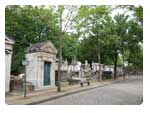
|
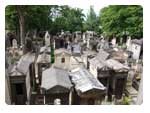
|
Ohlsdorf | ||
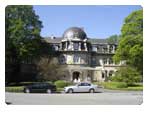
|
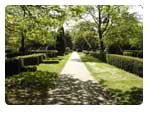
|
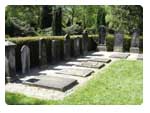
|

|
||
Bratislava | ||
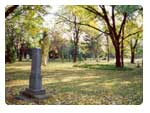
|
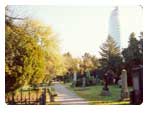
|
|
Detva | ||

|

|

|

|
||
Bratislava - Lamač | ||
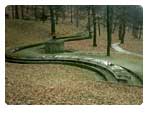
|
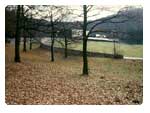
|
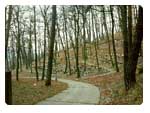
|
Bratislava - Ružinov | ||

|
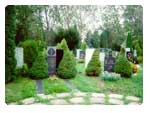
|
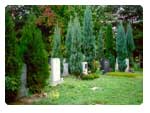
|
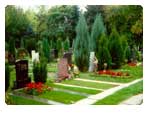
|
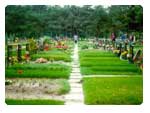
|
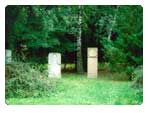
|
Neubiberg | ||
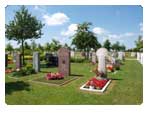
|

|
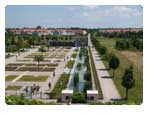
|
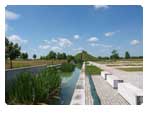
|
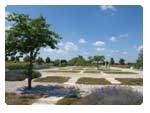
|
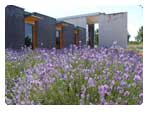
|
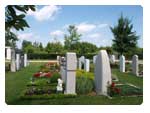
|
||
Nieuwe-Ooster | ||
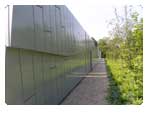
|
||
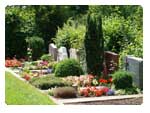
|
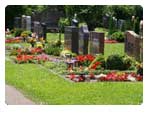
|
|

|

|
|
Autorka článku a fotogalérie
Ing. Denisa Halajová, PhD.
Katedra záhradnej a krajinnej architektúry FZKI SPU v Nitre


